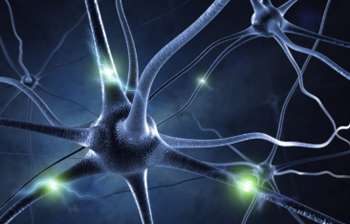3D-printed guides can help restore function in damaged nerves

Scientists at the University of Sheffield have succeeded in using a 3D printed guide to help nerves damaged in traumatic incidents repair themselves.
The team used the device to repair nerve damage in animal models and say the method could help treat many types of traumatic injury.
The device, called a nerve guidance conduit (NGC), is a framework of tiny tubes, which guide the damaged nerve ends towards each other so that they can repair naturally.
Patients with nerve injuries can suffer complete loss of sensation in the damaged area, which can be extremely debilitating. Current methods of repairing nerve damage require surgery to suture or graft the nerve endings, a practice which often yields imperfect results.
Although some NGCs are currently used in surgery, they can only be made using a limited range of materials and designs, making them suitable only for certain types of injury.
The technique, developed in Sheffield's Faculty of Engineering, uses Computer Aided Design (CAD) to design the devices, which are then fabricated using laser direct writing, a form of 3D printing. The advantage of this is that it can be adapted for any type of nerve damage or even tailored to an individual patient.
Researchers used the 3D printed guides to repair nerve injuries using a novel mouse model developed in Sheffield's Faculty of Medicine, Dentistry and Health to measure nerve regrowth. They were able to demonstrate successful repair over an injury gap of 3mm, in a 21-day period.
"The advantage of 3D printing is that NGCs can be made to the precise shapes required by clinicians," says John Haycock, Professor of Bioengineering at Sheffield. "We've shown that this works in animal models, so the next step is to take this technique towards the clinic".
The Sheffield team used a material called polyethylene glycol, which is already cleared for clinical use and is also suitable for use in 3D printing. "Further work is already underway to investigate device manufacture using biodegradable materials, and also making devices that can work across larger injuries" says Dr Frederik Claeyssens, Senior Lecturer in Biomaterials at Sheffield.
"Now we need to confirm that the devices work over larger gaps and address the regulatory requirements," says Fiona Boissonade, Professor of Neuroscience at Sheffield.
More information: Christopher J. Pateman, Adam J. Harding, Adam Glen, Caroline S. Taylor, Claire R. Christmas, Peter P. Robinson, Steve Rimmer, Fiona M. Boissonade, Frederik Claeyssens, John W. Haycock, "Nerve guides manufactured from photocurable polymers to aid peripheral nerve repair," Biomaterials, Volume 49, May 2015, Pages 77-89, ISSN 0142-9612, DOI: 10.1016/j.biomaterials.2015.01.055.















